NORTHUMBERLAND & DURHAM RAILWAYS OF
Compiled by Colin Alexander
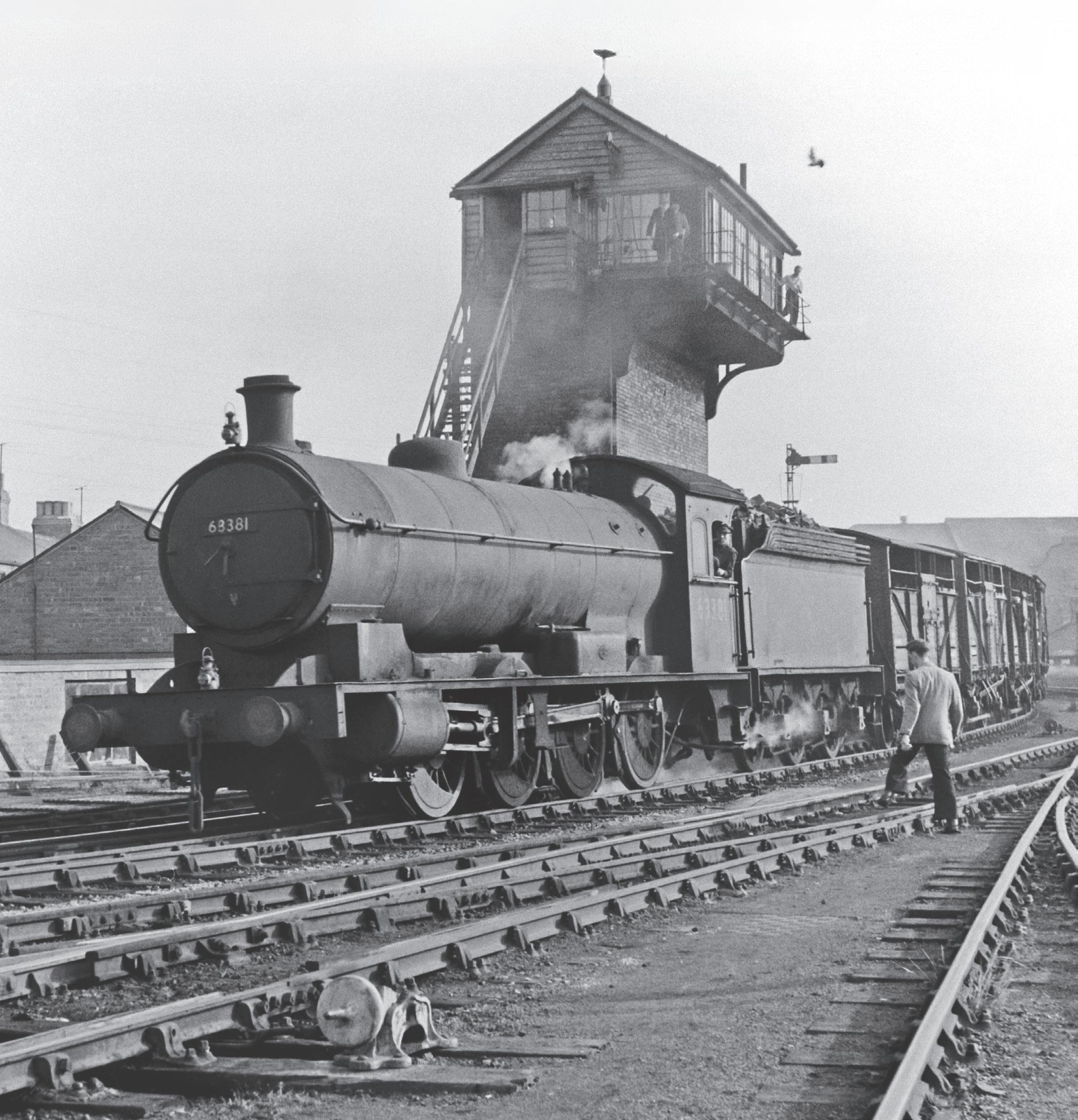

Compiled by Colin Alexander

Compiled by Colin Alexander

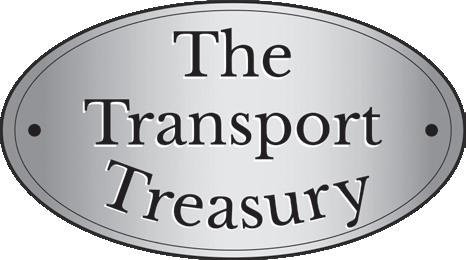
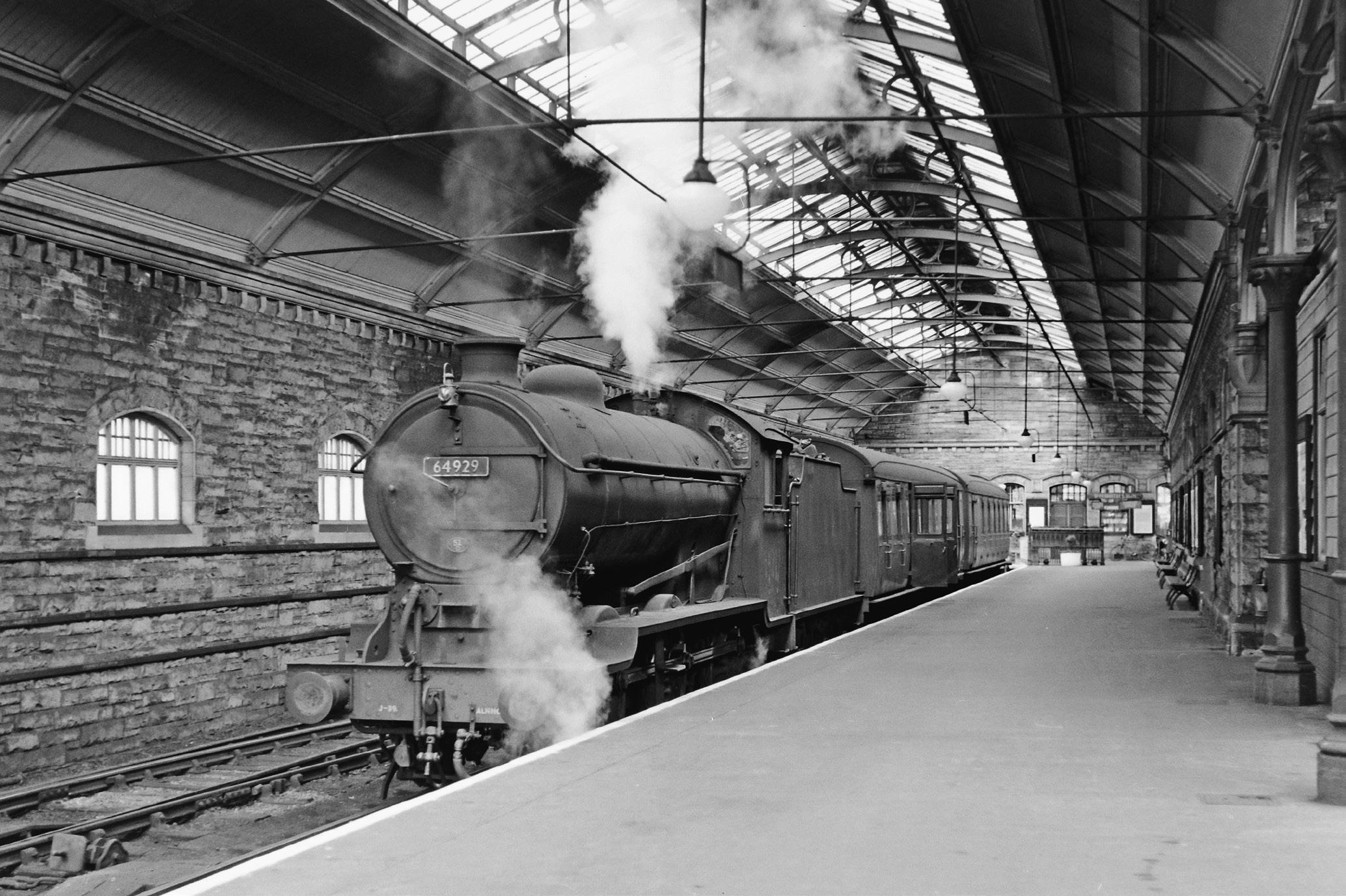

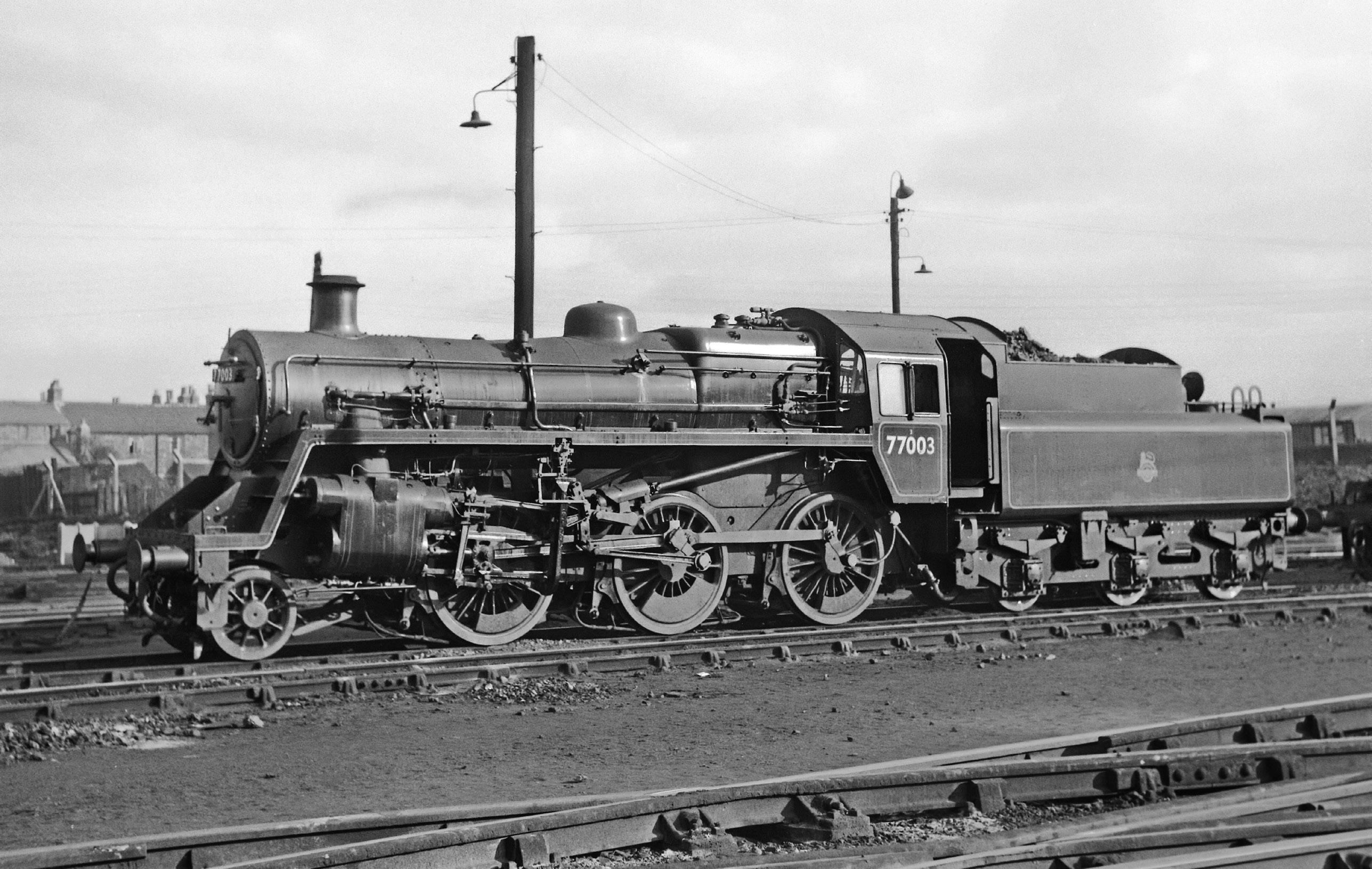
Left Top: Darlington’s first station was North Road, on the Stockton & Darlington Railway. Bank Top station, a mile to the south, was originally the terminus of the Great North of England Railway from York, opened in 1841. The present station is the third on the site and was completed in 1887 to the design of NER architect William Bell and engineer Thomas Harrison. On the 9th September 1958, a very grimy Class D49 4-4-0 62753 The Belvoir, allocated to Starbeck shed, near Harrogate, stands in one of the south end bay platforms. Peppercorn Class A2 4-6-2 60526 Sugar Palm is alongside on the up main line. The D49 had a year left in service, the A2 lasting a further three years.
Left Bottom: Also at Darlington shed, photographed on 27th March 1954 was nearly-new BR Standard Class 3MT 2-6-0 77003, having entered traffic from Swindon works a month earlier. This was probably the least known of the Standard classes, with only twenty built and none preserved. The twelve classes of Standards, totalling 999 locomotives were among the premature victims of dieselisation under BR’s ill-thought-out Modernisation Plan and none lasted longer than 17 years in service, some much less. 77003 had a working life of less than thirteen years, during which time it was allocated to West Auckland for a decade.
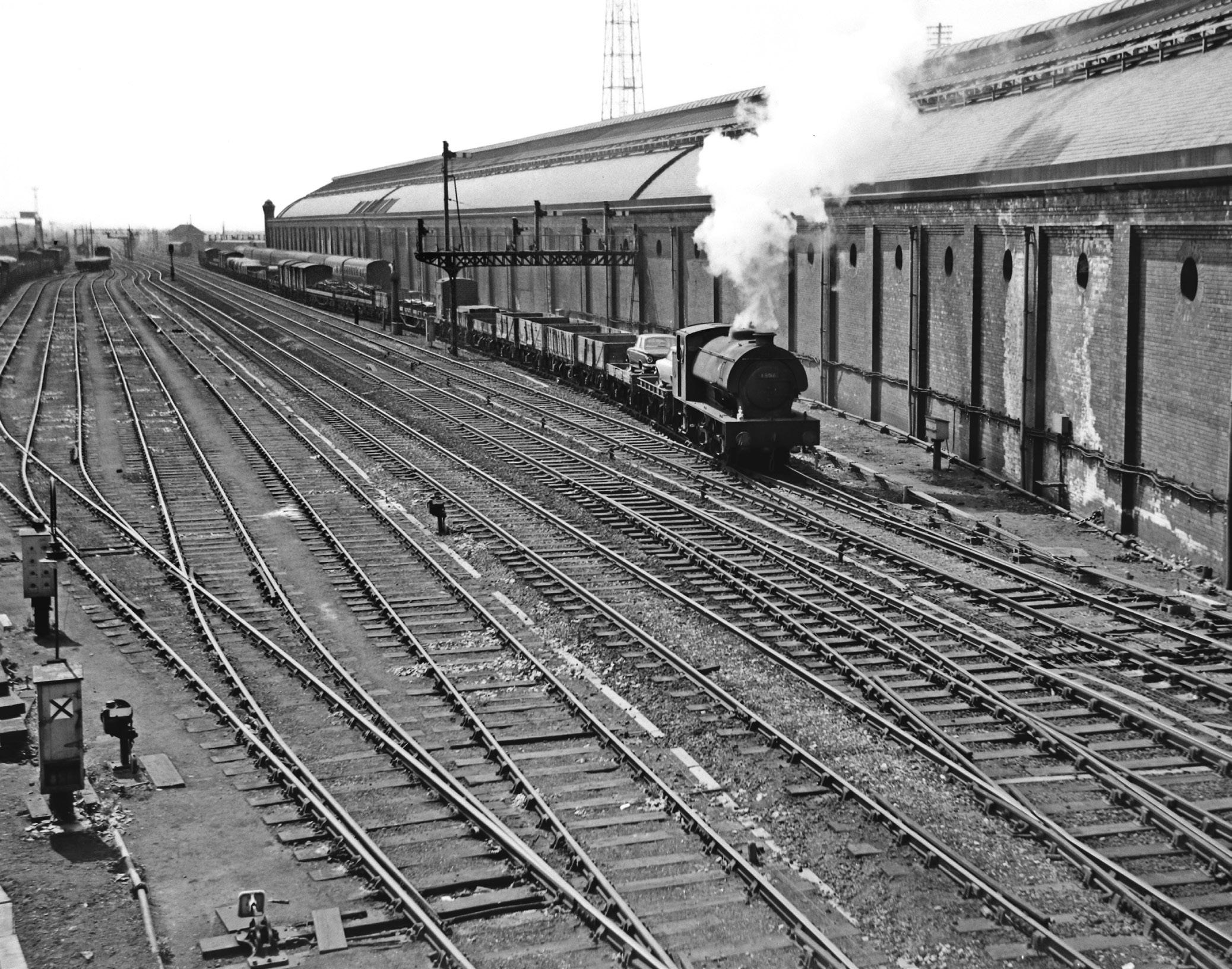
Like Newcastle Central, Bank Top has avoiding lines but here they are dead straight, permitting non-stop passenger trains to pass at speed. The crew of Class J94 Austerity 0-6-0ST 68016 won’t be worried about speed as they deal with a lengthy freight train beside the station on 1st June 1963. Behind the locomotive are two flat wagons conveying cars, one of which is identifiable as a Mk1 Ford Cortina. Almost 500 Austerity saddle tank locomotives were built by various manufacturers to this design, initially for the War Department then for industrial use. After the war, the LNER purchased 75 of them and the last was withdrawn in 1967. 68016 was built by Hunslet of Leeds in 1944 as War Department 75148.
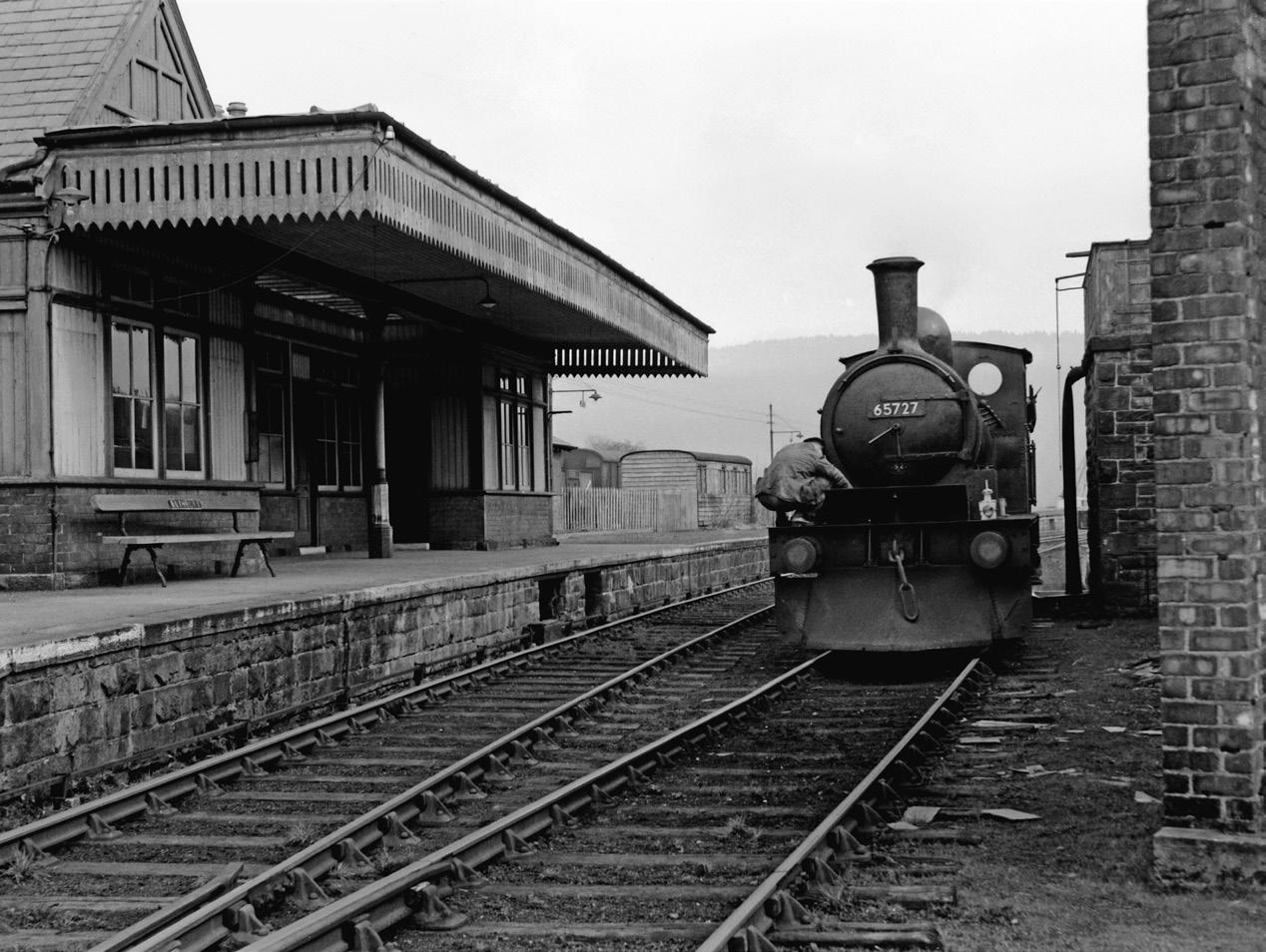
The Northumberland Central Railway was intended to run north from Scotsgap to a junction on the Tweedmouth to Coldstream line. It got as far as the market town of Rothbury by 1870. By this time the North British Railway had taken over the line and it never got beyond the terminus at Rothbury, where we see J25 65727 again. Behind the camera was a turntable, which allowed locomotives to access the run around loop. The last passenger train left in 1952, although like many rural railways in Northumberland, occasional excursion trains ran until goods traffic also ceased in 1963. There is almost no trace of the station now, though some of the bridges on the line can still be seen, including the beautiful Fontburn Viaduct.
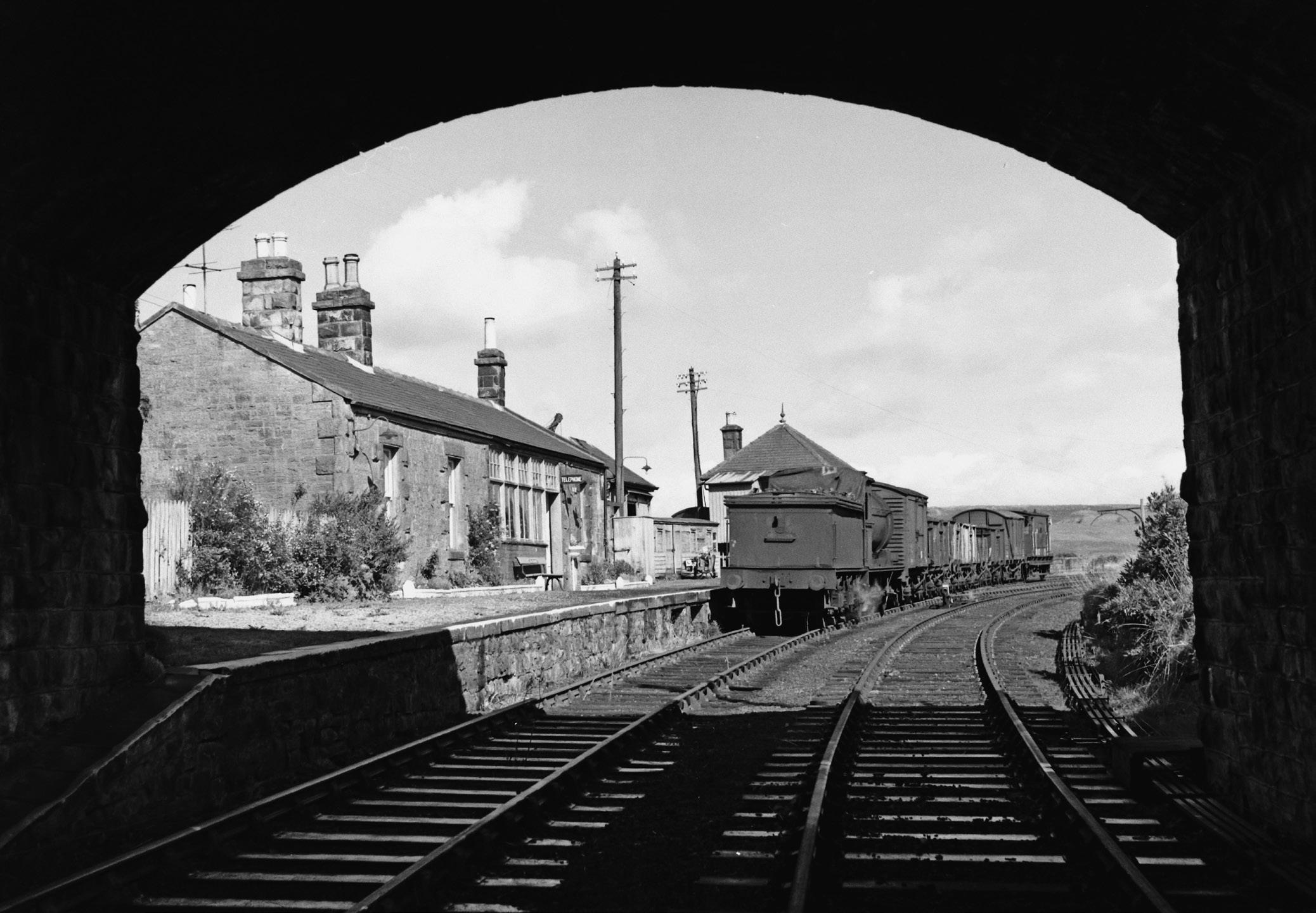
Between Scotsgap and Reedsmouth was wild country indeed, mostly uninhabited. The tiny Woodburn station served the hamlets of East and West Woodburn, each of which was ¾ mile away. Troop trains used the station, as the MOD’s Otterburn ranges were nearby. After its inevitable closure in 1952, goods trains continued until 1966, by which time it was a terminus at the end of the line from Morpeth. The end was nigh on 15th September 1966, when Class J27 0-6-0 65869 was captured, framed artistically by the overbridge. As with so many rural stations, it would have been a waste to demolish the sturdy buildings and they are now houses.
The Blyth & Tyne Railway
The contrast between the rural Northumberland we just left and the territory of the former Blyth & Tyne Railway could not be greater. This was the most intensively mined area of the Northumberland coalfield, encompassing about fifty collieries. In my childhood, it seemed every town in south-east Northumberland and north-east Durham had pithead gear and a spoil heap.
This part of Northumberland had seen some of Britain’s first wagonways, there was one carrying coal from Bedlington to the River Blyth as early as 1608. Some of those wagonways evolved into sections of the fiercely independent Blyth & Tyne Railway, which finally succumbed to takeover by the omnipotent North Eastern Railway in 1874. It had spread from Blyth northwards to Morpeth and Newbiggin, and south to the Tyne at Newcastle, Percy Main and Tynemouth. Its raison d’être was the carriage of coal to navigable water for onward shipment, but passengers were also conveyed.

The northern extremity of the Blyth & Tyne Railway in terms of passenger services was Newbiggin, sometimes referred to as Newbiggin-by-the-Sea. Passenger trains ran from here to Newcastle from 1872 to 1964. The company had ambitions to reach as far north as Warkworth, but this extension never happened. On 5th August 1955, Gresley Class V1 2-6-2T 67645 awaits departure from the terminus at Newbiggin with a train for Manors North, Newcastle. Four years later the locomotive would receive a higher pressure boiler and be reclassified as a V3. There is no trace of Newbiggin station today.
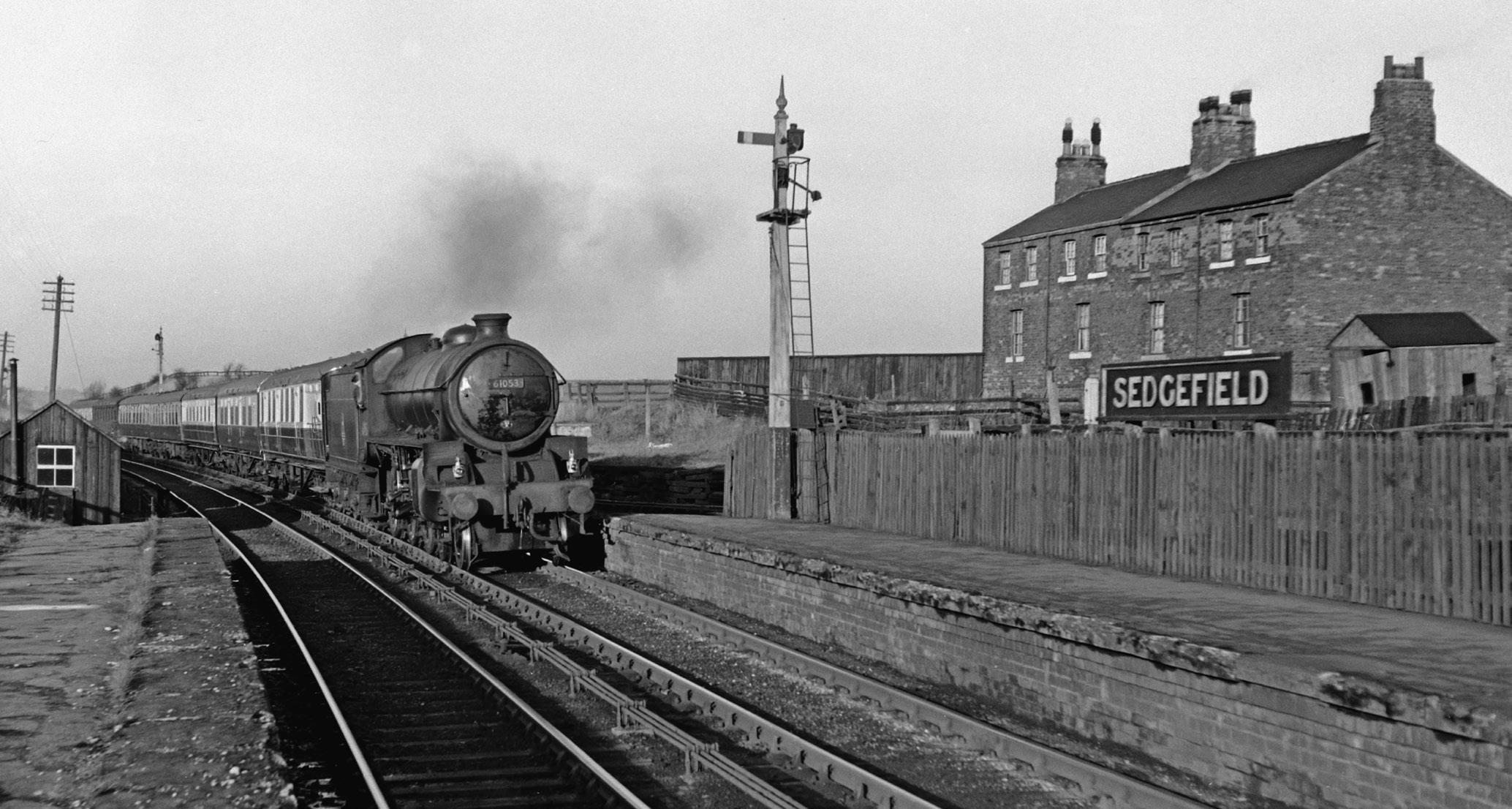
Sedgefield station, located about two miles west of the town, opened in 1835 on the Clarence Railway between Ferryhill and Stockton. Sometime in the 1950s, Thompson Class B1 4-6-0 61053 was passing with a southbound passenger train composed of Gresley, Thompson and BR Mk1 coaches, mostly in BR crimson & cream livery. Although the station closed in 1952, it continued to handle racecourse traffic until 1960. Freight traffic still uses the line, and for many years it was a weekend diversionary route for passenger trains.
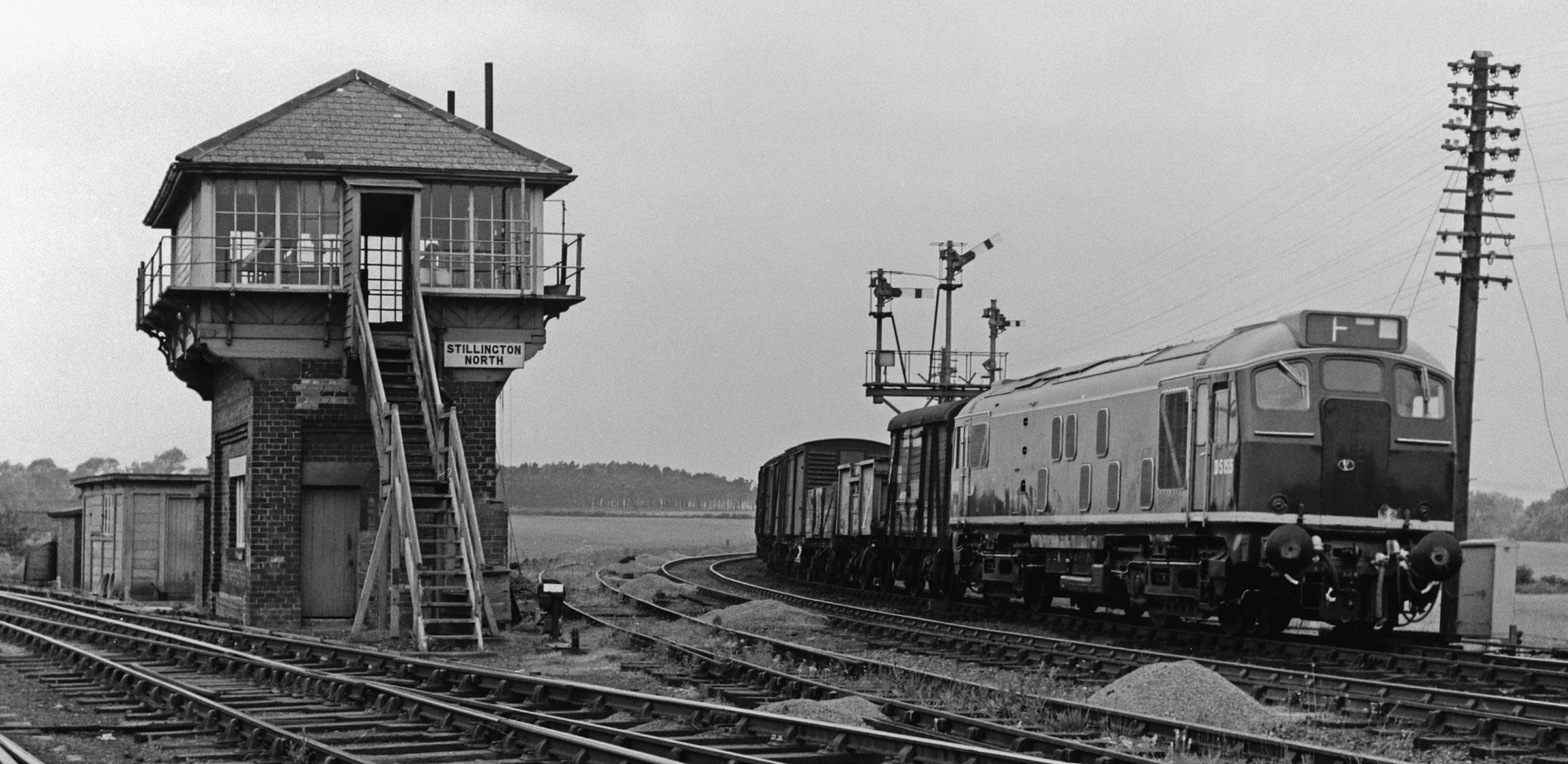
About six miles south-east of Sedgefield station was Stillington, also originally on the Clarence Railway. Stillington North Junction was two miles west of the station, and here we see BR Sulzer Type 2 diesel-electric D5155 on 10th June 1961. It had arrived brand new at Thornaby depot exactly a week earlier, and is bringing a freight train around the curve from Ferryhill towards Stockton. The line in the foreground is to Newton Aycliffe and Shildon, which was formerly the electrified route to Newport yard, near Middlesbrough. For this, the NER built ten Bo-Bo electric locomotives of Class EB1, operating from 1,500 volt DC overhead wires. Like the diesel in the photograph, they were built at Darlington works, but 47 years earlier.
This final section features County Durham to the west of the main line, an area steeped in railway antiquity. As well as the groundbreaking Stockton & Darlington Railway, there was the long distance Stanhope & Tyne Railroad (the term ‘railroad’ was used here as well as in the USA) and the Tanfield lines of The Grand Allies.
These and other early railway companies opened up County Durham’s relatively uninhabited west for the extraction of minerals and quarried stone. They transported those mineral riches to the Tyne, Wear and Tees, and facilitated the large-scale production of iron and steel. Long branch lines threaded their way optimistically along the Durham dales into the north Pennines, areas just as remote as north Northumberland. As in the border county, most of these railways have disappeared altogether.
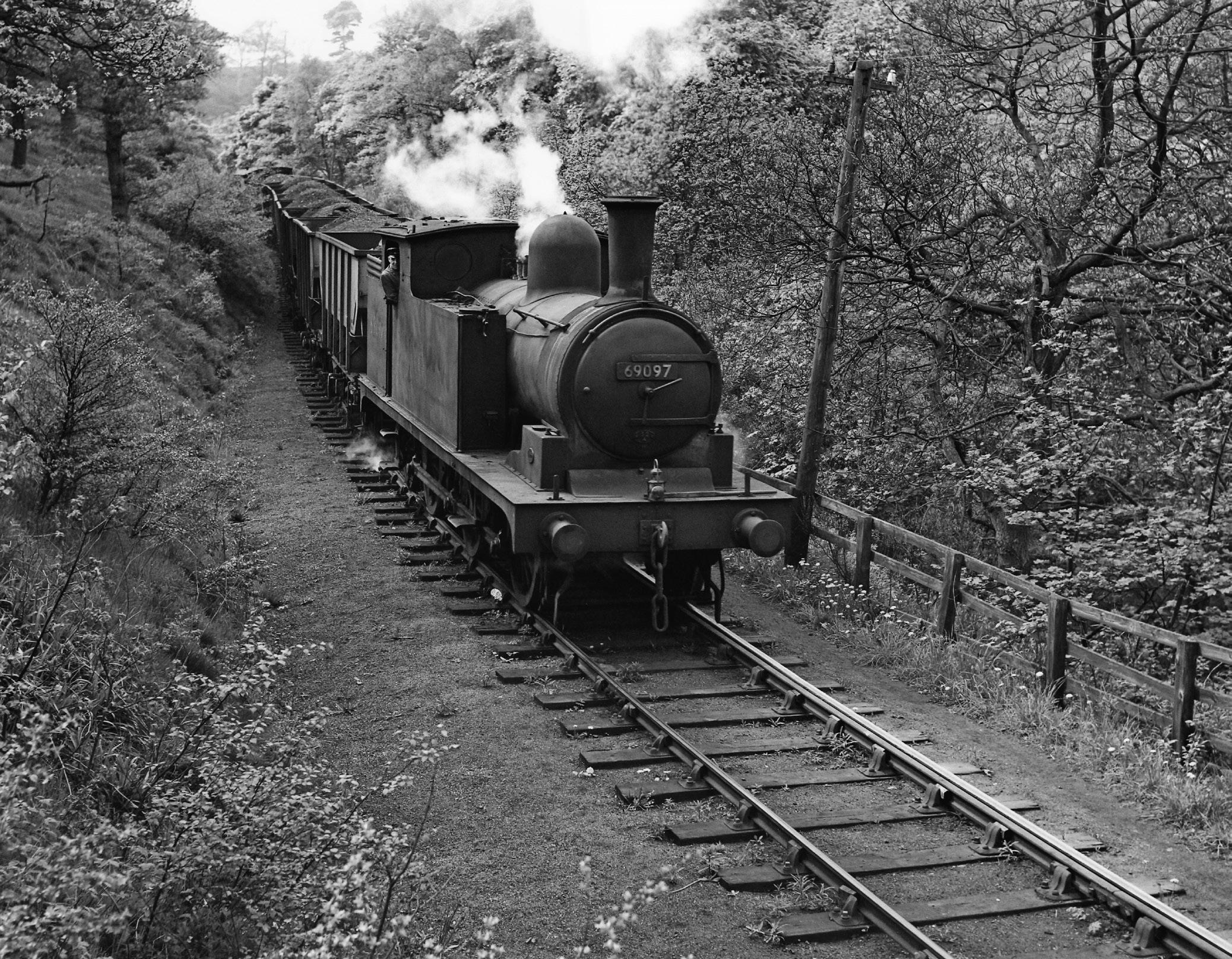
Predating all of the railways seen in this book was the Tanfield Wagonway, with its famous Causey Arch of 1725, which still stands and is the oldest railway bridge in the world. Its construction was financed by pioneering colliery owners Charles Montague and Colonel Liddell, and its purpose was to expedite the movement of coal to the Tyne. Today’s passengers on the delightful preserved Tanfield Railway can alight here and walk over and under the Grade 1 listed Scheduled Ancient Monument. Where heritage trains now carry tourists, on 12th May 1959, Class N10 0-6-2T 69097 was photographed in the sylvan setting of Causey Wood with loaded coal hoppers.
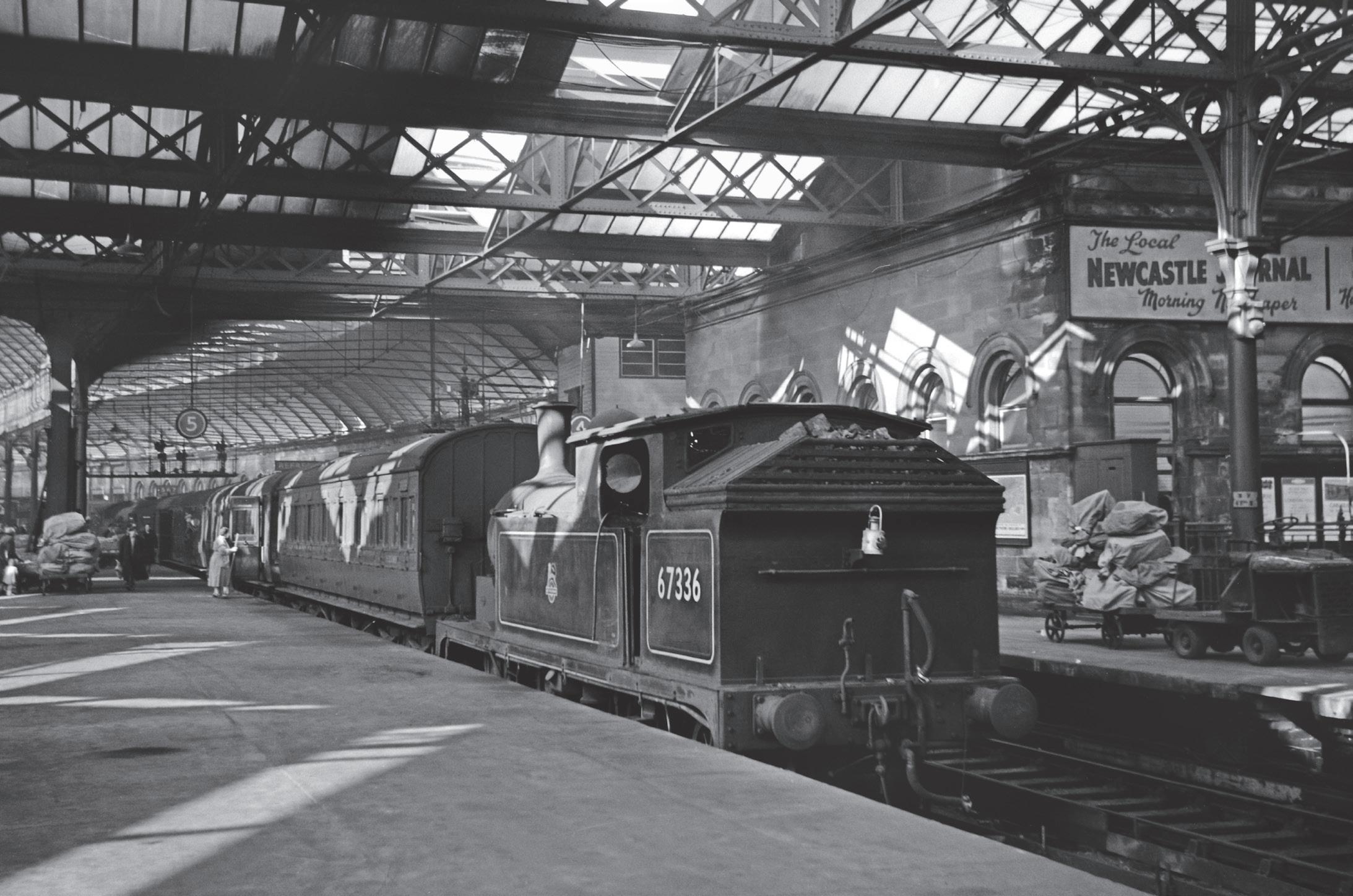
The border county of Northumberland and the Land of the Prince Bishops, County Durham, are both steeped in history. From the uninhabited uplands of the Pennines and Cheviots to the coast there are ancient hillforts, substantial Roman remains and dozens of castles. Railway history is in abundance too, with evidence of some of Britain’s earliest wagonways, the economic harnessing of steam power thanks to local heroes Hedley, Hackworth and the Stephensons, and of course the Stockton & Darlington Railway which is about to celebrate its bicentennial.
It is a land of great contrasts, though less so since the demise of its traditional industries. Outside of the once smoke-blackened conurbations of Tyneside, Wearside and Teesside there are few major towns, and this is reflected in today’s railway map. On the modern railway, so much of the former North Eastern Railway has gone and nothing remains of the Northumbrian section of the North British Railway. With hindsight, some of those closures are regrettable, but at least one line is making a passenger comeback in the 21st century.
Of the railways that did close forever, there is still much to see. Driving across Northumberland and Durham the motorist frequently encounters viaducts, bridges and embankments, substantial stations and other buildings converted into accommodation or other imaginative uses. This book sets out to portray the railways of those two counties as they were in the latter days of steam between nationalisation and rationalisation.
Published by Transport Treasury Publishing Ltd.
£14.95
ISBN 978-1-913251-87-1
